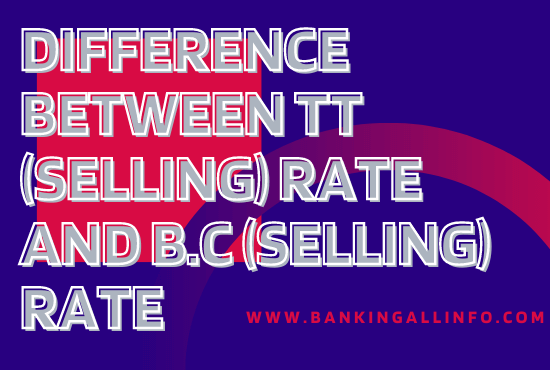Difference between TT Selling Rate and B.C selling Rate
TT (Selling) rates are used for remittance from one country to another by telegraphic transfer and payment involves no loss of interest profit.

BC (selling) rate is applied against the import, which requires some extra work. Therefore the rate represents the bank’s basic TT selling rate plus the costs involved in the handling of documents.
TT Selling Rate (TT stands for Telegraphic Transfer)
This is the rate to be used for all transactions that do not involve the handling of documents by the bank.
Transactions for which this rate is quoted are:
Issue of demand drafts, mail transfers, telegraphic transfer, etc., other than for retirement of an import bill.
Cancellation of foreign exchange purchased earlier. For instance, when an export bill purchased earlier is returned unpaid on its due date, the bank will apply the TT selling rate for the transaction.
2. Bills Selling Rate
This rate is to be used for all transactions which involve the handling of the document by the bank: for example, payment against import bills.
The bills selling rate is calculated by adding exchange margin to the TT selling rate. That means the exchange margin enters into the bills selling rate twice, once on the interbank rate and again on the TT selling rate.

